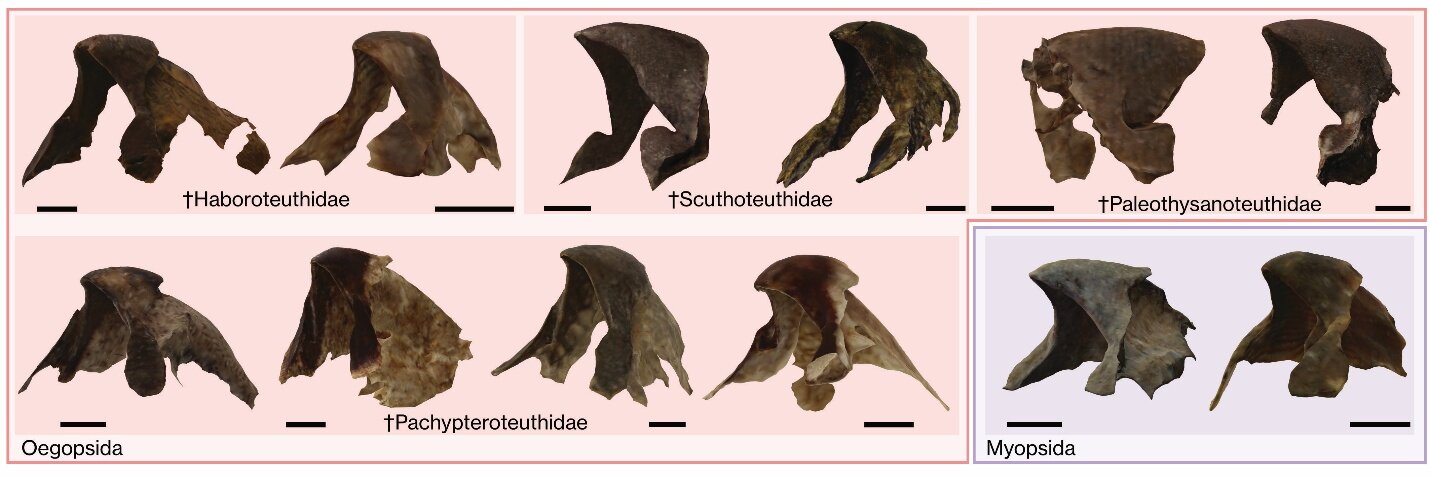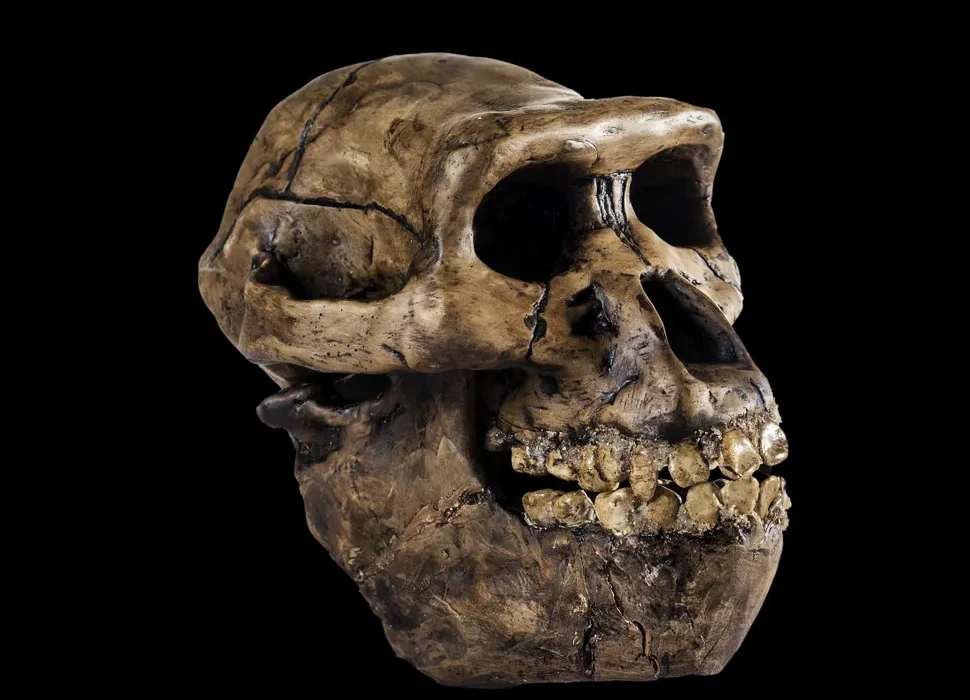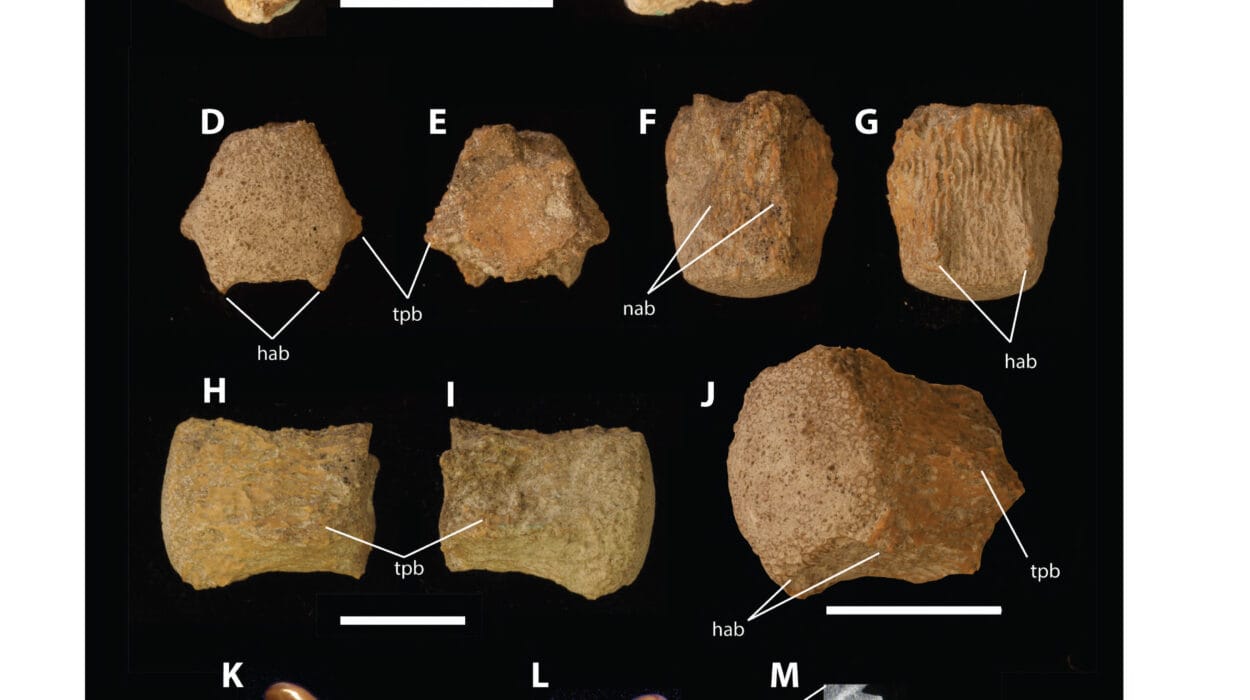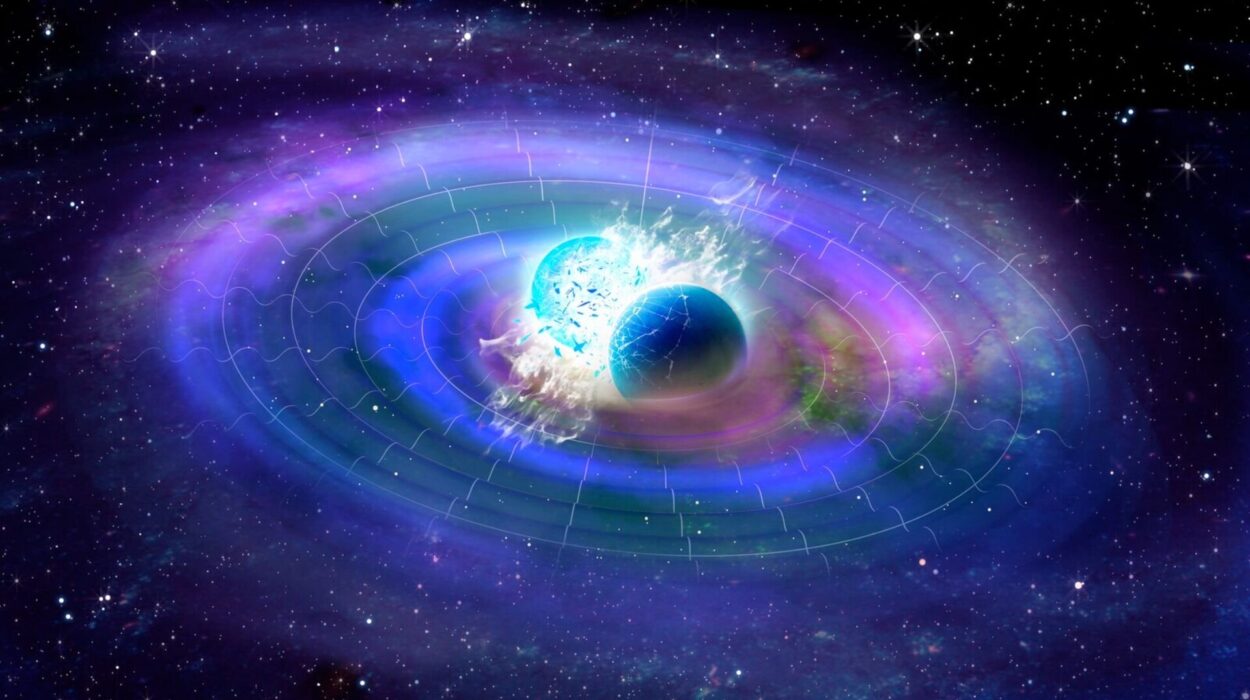In the inky depths of prehistoric oceans, long before the fall of the dinosaurs, a silent revolution was unfolding. It wasn’t driven by bones or brawn, but by something much slipperier—squids.
A new study published in the journal Science is rewriting what we thought we knew about ancient marine life. It reveals that squids, often thought to have quietly emerged after the extinction of the dinosaurs 65 million years ago, were already thriving as dominant ocean predators tens of millions of years earlier.
The study, led by a team from Hokkaido University, used a groundbreaking technique to digitally resurrect fossil-rich rocks from the Late Cretaceous period, about 100 million years ago. What they found hidden inside would astonish even the most seasoned paleontologist: over 1,000 fossilized cephalopod beaks—263 of them belonging to squids, many of which had never been seen before.
Ancient Oceans, Ruled by Beaks and Tentacles
Squids are notoriously elusive in the fossil record. Unlike dinosaurs with their durable bones or ammonites with their spiraled shells, squids are soft-bodied and leave little behind—except for one small, tough clue: their beaks. These hard, parrot-like mouthparts are the only parts likely to fossilize, and they hold secrets waiting to be unlocked.
Using cutting-edge imaging to scan entire slabs of Cretaceous rock in full 3D, the Japanese team could study these beaks without cracking a single stone. Hidden among the sediment were fossils from over 40 previously unknown squid species—some large enough to rival modern tuna, others so small they could have fit on a fingertip.
Dr. Shin Ikegami, the study’s first author, expressed his awe:
“In both number and size, these ancient squids clearly prevailed the seas. Their body sizes were as large as fish and even bigger than the ammonites we found alongside them.”
Ammonites—extinct, shelled relatives of squids—have long been viewed as the kings of Mesozoic waters. But this study reveals that squids were more than just background players; they were prolific, powerful, and surprisingly diverse.
Meet the Ocean’s Forgotten Pioneers
Until now, the prevailing view was that squids only came into their own after the asteroid impact 65 million years ago that wiped out the dinosaurs and much of marine life. But the new findings push their reign far earlier—to a time when pterosaurs ruled the skies and the continents were still shifting apart.
In fact, the research shows that the two main branches of modern squids—Myopsida, which dwell in coastal waters, and Oegopsida, who prefer the open sea—were already in place 100 million years ago.
This discovery suggests that modern squid lineages had already diverged and flourished during the Late Cretaceous, navigating the oceans with advanced swimming abilities and complex behaviors long before any primate first picked up a stone tool.
“These findings change everything we thought we knew about marine ecosystems in the past,” said Associate Professor Yasuhiro Iba, who led the study. “Squids were probably the pioneers of fast and intelligent swimmers that dominate the modern ocean.”
Fossils That Think Like a Detective Story
To unlock this forgotten chapter of squid history, the researchers turned to a revolutionary fossil imaging method that blends technology with deep patience. Using micro-CT scans and computer modeling, they created full three-dimensional views of rocks without destroying them. Inside, they discovered the telltale shapes of beaks—curved, dark, and distinctively cephalopod.
Unlike bones or shells, beaks can be tightly compacted, twisted, or fragmented, making them hard to detect with traditional fossil-hunting techniques. But this new approach revealed just how widespread squids had become, capturing snapshots of predator-prey dynamics frozen in stone.
The rocks used for the study were collected from Hokkaido, northern Japan—a region that during the Cretaceous period was submerged under a vast inland sea. These waters teemed with life, and the fossil layers tell a story of squid abundance, not only surviving but dominating the food chain.
More Than Just Numbers—Intelligence in Motion
What makes this discovery especially significant isn’t just the quantity of squids—it’s what they represent.
Squids and their cephalopod cousins (like octopuses and cuttlefish) are among the most intelligent invertebrates on Earth. Their nervous systems are complex, their eyes are camera-like, and their ability to change color, texture, and shape is unmatched. These traits evolved over time, but the foundation for such complexity, the study suggests, may have been laid far earlier than once believed.
If squids were already thriving 100 million years ago, it means that the evolutionary groundwork for their intelligence and adaptability had already begun. In a way, these fossil beaks aren’t just remnants of an extinct animal—they are markers of ancient cognitive evolution in the ocean’s dark depths.
Rewriting the Story of the Sea
The discovery upends long-standing assumptions about life in the Mesozoic seas. Rather than being dominated solely by ammonites and bony fish, these ancient oceans were likely full of fast, clever, and competitive squids, some possibly hunting in packs or displaying behaviors we still don’t fully understand.
It also raises new questions: Why did ammonites go extinct at the end of the Cretaceous, while squids survived and diversified? Did their lack of a shell actually give squids an advantage? Could intelligence and agility have been their secret weapons?
Though the fossils offer no direct answers, the sheer number and variety suggest that squids were not evolutionary latecomers. They were the unseen rulers of the ancient sea—silent, swift, and smarter than we ever imagined.
The Legacy of a Hidden World
This discovery is more than a scientific breakthrough; it’s a tribute to the patience and persistence of paleontologists willing to challenge old assumptions and use new tools to uncover lost stories.
Squids, once invisible in the fossil record, have finally begun to tell theirs.
They remind us that history isn’t just written in bones—it’s etched in beaks, buried in rock, and waiting for someone to look deeper. In the swirling darkness of ancient seas, squids rose to power long before humans ever gazed at the stars. And now, millions of years later, their ghostly traces are finally coming to light.
Reference: Shin Ikegami et al, Origin and radiation of squids revealed by digital fossil-mining, Science (2025). DOI: 10.1126/science.adu6248. www.science.org/doi/10.1126/science.adu6248






